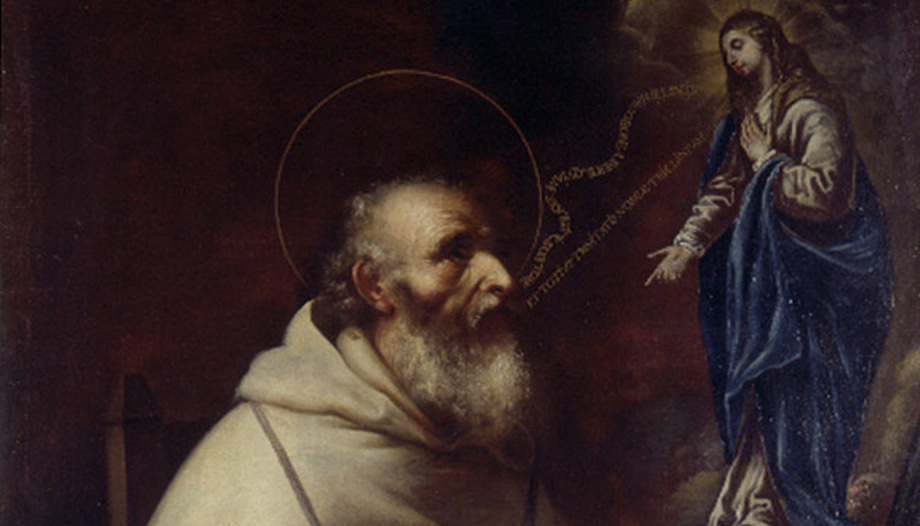Cologne, November 15, 1980. John Paul II has just arrived in the city of the famous Cathedral to commemorate the VII centenary of the death of St. Albert the Great (ca. 1200 - 15-11-1280). Known today by this nickname, his contemporaries called him "the German". The mortal remains of St. Albert lie about 200 meters from the cathedral in the church of St. Andreas, which is run by the Dominicans.
Kneeling before the tomb, John Paul II prayed: "O God, our Creator, author and light of the human spirit, you enriched St. Albert in his faithful following of Jesus Christ, our Lord and Master, with a profound knowledge of the faith. Creation itself was for him a revelation of your omnipotent goodness, as he learned to know and love you more deeply in the creatures. Likewise, he investigated the works of human wisdom, as well as the writings of non-Christian philosophers, which opened his way to an encounter with your joyful message. You especially enabled him with the gift of discernment to defend himself against error, to deepen his knowledge of the truth and to spread it among men. For this reason, you have made him a teacher of the Church and of all men.
Faith and reason
John Paul II then went to the cathedral, where he met with university professors and students. His speech anticipated a crucial theme for his successor, Benedict XVI: the relationship between faith and reason. St. John Paul II praised the efforts of Albert the Great in this regard: "Albert carried out the admirable appropriation of rational science, transferring it to a system in which it preserves and consolidates its own peculiarity, while remaining oriented towards the goal of faith, from which it receives its decisive approach. Alberto thus achieves the status of a Christian intellectuality, whose principles are still valid today". And he concluded by suggesting that the solution "to the pressing questions about the meaning of human existence" is only possible "in the renewed union of scientific thought with the power of faith, which impels man towards the truth".
St. John Paul II presented Albert the Great as a symbol of the reconciliation between science (or reason) and faith. In his time, he was a pioneer in this quest and can be considered the first scientist in the contemporary sense of the term.
The story of St. Albert the Great
Albert was born in Lauingen, on the banks of the Danube in Swabia (now part of the federal state of Bavaria with a population of just over 11,000). His life exemplifies the extraordinary mobility of the Middle Ages: in 1222 he lived with his uncle in Venice and Padua, where he studied liberal arts and possibly medicine. A year later, he entered the Dominican Order. He completed his novitiate in Cologne, where he studied theology and was ordained a priest. Subsequently, he taught and studied at various Dominican monastic schools in Hildesheim, Freiburg im Breisgau, Regensburg and Strasbourg.
During his studies he encountered the work of Aristotle. Albert sought to reconcile the natural philosophical thought of the Greek philosopher with the Christian faith. Thanks to him, the ideas of Antiquity returned to European culture after centuries of oblivion, which would have important repercussions for medieval and later philosophy. It would be a disciple of Albert, Thomas Aquinas, who would carry out the most important synthesis between Aristotelian philosophy and the Christian religion, giving a considerable impulse to scholastic philosophy. Thomas was a disciple of Albert in Paris, where he stayed for five years, beginning in 1243.
His experience at the University of Paris helped Albert to direct the "Studium Generale" of his order in Cologne, when he returned to this city in 1248. This was the germ of the University of Cologne, founded in 1388, so Albert the Great is considered the forerunner of the university. Today, a statue stands in his honor in front of the main building of the University of Cologne. During this time, the foundation stone of the famous cathedral was also laid on August 15, 1248.
"Magnus"
But his titles of doctor of the Church, "Magnus" and "doctor universalis" refer to his extensive knowledge - today we would say encyclopedic - of this Dominican, also in the natural sciences: he took advantage of the extensive travels referred to above to observe nature. Among other things, he carried out botanical, mineralogical and metallurgical studies, standing out for his systematic descriptions and alchemical experiments, such as the pure representation of arsenic. These achievements established him as one of the most important medieval natural scientists. For two years he was even bishop of Regensburg (Regensburg): from 1260 to 1262.
No other scholar of the 13th century surpassed Albert in universality of interests, knowledge and intellectual output. As a scientist, he strengthened the philosophical foundation of theology and advocated a philosophy independent of theology. He was ahead of his time in such fields as botany, zoology, geography, geology, mineralogy, astronomy, physiology, psychology and meteorology.
Seventy of his treatises are preserved, filling about 22,000 printed pages. The "Albertus Magnus" Institute has been working on a critical edition of his complete works since 1931.
St. Albert the Great was canonized by Pope Pius XI in 1931; his successor, Pius XII, declared him patron saint of natural scientists in 1941.













